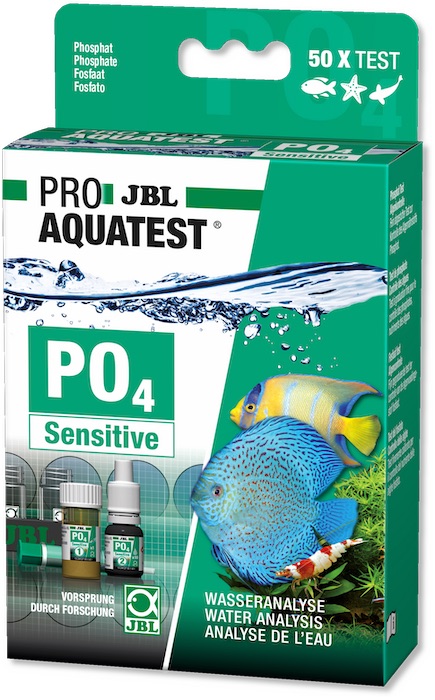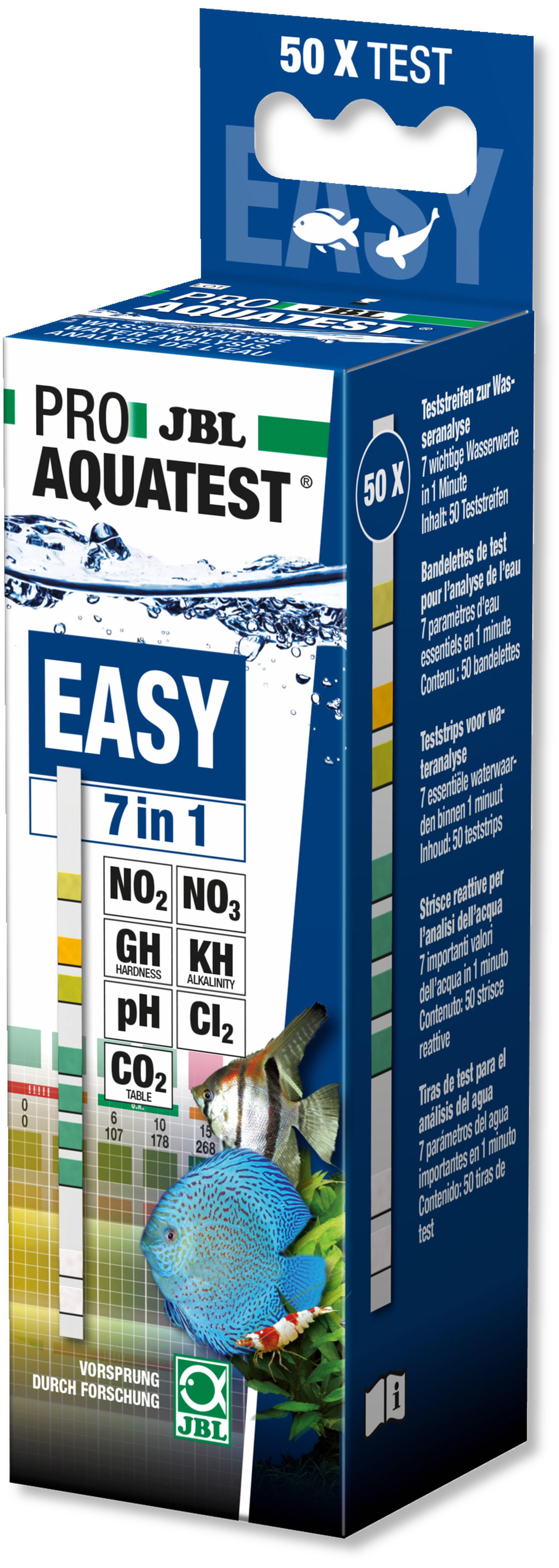Water values & water tests for the pond, swimming pond & Co ☘

Water quality and the nutrients in the water play a key role in the formation of algae. With simple water tests the water values for the pond, swimming pond, natural pool, etc. can be determined.
High temperatures and light intensities also promote algae growth. Water from the earth, well water, ground water, lake water, etc. are basically enriched with many nutrients, e.g. fertiliser use from agriculture.
Tap water, on the other hand, has been treated by the water supplier and usually contains fewer nutrients. In agricultural areas, increased phosphate levels in drinking water can come from pipes.
Collected rainwater is low in nutrients, with water hardness between 2 and 4° CH and pH between 4 and 6. Rainwater for refilling is optimal. If the quantity is large, from 30% of the pond volume, it can significantly reduce the carbon hardness, so that the pond becomes unstable.
The most important water values in overview
Optimum water values for pond, garden pond, swimming pond, biopool, koi pond, natural pond, natural pool etc. |
||
| Values | Recommended | Effect |
| CI-value | Chlorine 0 mg/l | Toxic, poison for fish, plants |
| pH-Value | Acidity 6,5-8.5 | High pH value promotes algae growth |
| CH-Value | Carbon Hardness 10-14° | Bicarbonate acts as pH buffer (calcium, magn.) |
| TH-value | Total hardness 7-14° | Concentration of calcium & magnesium salts |
| NO2-value | Nitrite < 0.3 mg/l | Biofilm growth, toxic for fish |
| NO3-value | Nitrate 25 mg/l | Nutrient for algae |
| PO4-value | Phosphate 0.03 mg/l | Main nutrient for algae growth |
CI - Chlorine
Chlorine is produced industrially and is pure chemistry, or rather a chemical. Chlorine has a strong oxidizing effect and is therefore bleaching and disinfecting. It kills vital bacteria in natural waters and has an oxidizing effect on plants, fish, humans and animals.
pH value
The pH value provides information about the acid or base content of the water. The optimal pH-value is 7.5, for swimming ponds up to 8.4. A low pH-value means the water is acidic, a high pH-value for alkaline water. Rainwater is mostly acidic and good against algae formation.
CH - Carbon hardness
A good CH value lies in the range between 10 and 14 °dH (degree of German hardness). Sufficient carbonate hardness ensures a stable pond and promotes the growth of pond plants and microorganisms. If the CH value is low, e.g. too much rainwater, the water is not sufficiently buffered and this leads to fluctuations in the pH value, acidity of the water. The acidity of the pond water changes during the course of the day. During the day the pH-value drops and at night the acidity pH-value increases. The carbonate hardness balances the fluctuations of the pH-value and thus buffers the pH-value. By binding free carbon dioxide (CO2), calcium, magnesium, carbonate is formed.
TH - Total hardness
The total hardness (TH) shows the number of salts dissolved in the water as a value. The most important salts are calcium and magnesium. The total hardness is divided according to degrees of hardness: 1°dH (degree of German hardness) in one litre of water is equivalent to 10 mg calcium and/or magnesium oxide. If the hardness of the water is too low, the biological processes do not function sufficiently, all living things in the water suffer.
| The optimum TH value is between 7-14 ° dH / hardness grade 2 |
|||
| TH-value | Hardness grade |
Hardness grade of the water |
Corrective measures |
| 0-7° dH | 1 | Soft water | Addition of calcium or magnesium salts |
| 7-14° dH | 2 | Medium hard water | not necessary |
| 14-21° dH | 3 | Hard water | add rain water |
| > 21° dH | 4 | Very hard water | add rain water |
NO2 - Nitrite
Nitrite is produced by bacteria and only occurs in low concentrations in natural waters. The optimal NO2 nitrite value should be 0.1 mg/l, max. 0.3 mg/l. Through the use of fertilizers, agriculture pollutes the groundwater, depending on the region, sometimes heavily. If the nitrite-polluted water is used in garden, koi or swimming ponds, the biofilm grows much stronger. Too high nitrite (NO2) values can be dangerous for fish, especially through fish excretions.
NO3 - Nitrate
Nitrate is naturally present in low concentrations in groundwater. Optimum nitrate values are below 25 mg/l. Too high nitrate values are converted into algae by an aerobic process. The main reason for increased nitrate concentrations in groundwater is intensive agricultural cultivation.
PO4 - Phosphate
Phosphate, together with nitrate, is a main nutrient for the formation of plants and algae. Just 1 g of phosphate in the water is enough to make 10 kg of algae grow. The optimum phosphate value (PO4) is 0.03 mg/l water. If phosphate levels are too high, algae will inevitably form. Phosphates are used in fertilizers, detergents or food. Them PO4 water test sensitive can be used to measure the smallest amounts of phosphate.
Water tests to measure the water quality in the pond & Co
With the water test sets you can determine the 8 most important water values. Even if the water looks clear, it may be polluted with too many nutricients. Poor values can cause diseases or algae. For healthy water with natural conditions, regular checks are important.
The Water Tests helps you to analyse all important water values reliably. There are 8 different water tests values available for comprehensive water analyses.
With these two water tests you can measure quickly and easily the 8 most important water values by yourself:



